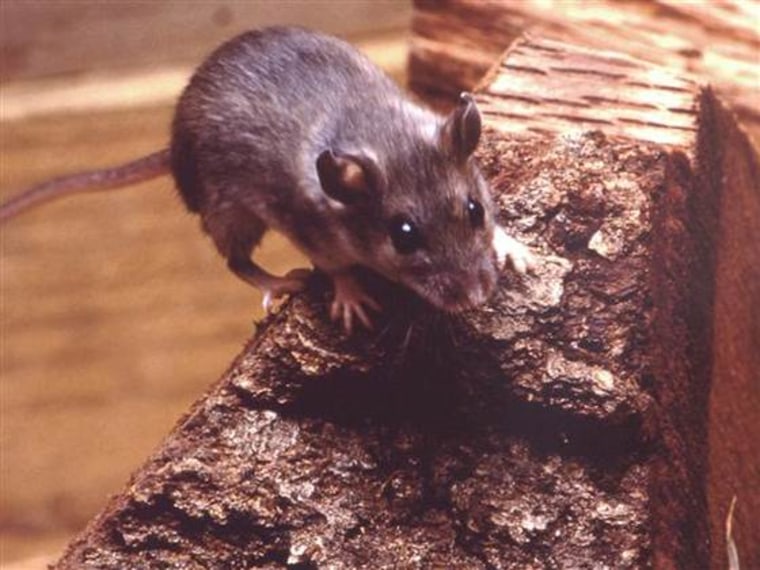Humans may be responsible for a jump in brain growth among mice and some other small mammals living around us in both urban and rural settings, a new study finds.
Small mammals that either produce a lot of babies or eat a lot of bugs exhibited the greatest cranial capacity (i.e. brain growth) due to human-caused environmental changes over the past century, suggests the study, which is published in the latest Proceedings of the Royal Society B.
“Small mammals with high fecundity (such as deer mice and meadow voles) show the most pronounced differences in cranial capacity between urban and rural environments, having larger cranial capacity in urban environments,” lead author Emilie Snell-Rood told Discovery News.
10 Ways Science is Using Human-Animal Hybrids
“Insect-feeding species, like bats and shrews, show the most pronounced response to rural environments, showing an increase in cranial capacity in rural populations over the last 90 years,” added Snell-Rood, who is an assistant professor in the Department of Ecology, Evolution and Behavior at the University of Minnesota.
She and colleague Naomi Wick examined variation in skull size over the past century for 10 species living in both urban and rural areas of Minnesota. The species, whose skulls all came from the University of Minnesota’s Bell Museum mammal collection, included the following: Northern short-tailed shrew, Southern red-backed vole, big brown bat, Plains pocket gopher, little brown bat, meadow vole, white-footed mouse, Eastern gray squirrel, masked shrew and the American red squirrel.
The researchers chose to investigate only mammals because their preservation in museums makes it relatively easy to measure braincase volume.
The white-footed mouse and the meadow vole exhibited some of the most dramatic brain growth increases, given that the brains of urban and suburban individuals were about 6 percent bigger than those of their rural counterparts.
NEWS: OCD Dogs and Humans Share Same Brain Abnormalities
Conversely, country-living squirrels and bats “showed marginally significant increases in relative cranial capacity over time in rural populations,” according to the study.
For each of the examined mammals, the researchers controlled for sex and body size. The animals therefore didn’t just have bigger heads and bigger brains due to more human-provided food, for example.
In terms of the brainier city dwelling small mammals, “we hypothesize that the change in the urban environment is due to cognitive adaptations to the novel challenges associated with city and suburban living,” Snell-Rood said.
Prior studies on birds have found that big-brained species tend to do better in cities. Snell-Rood suspects that the movement abilities of bird and small mammals give them an edge over species that are not so flexible.
NEWS: Stem Cells Create Mighty Mice
As for the big brained country critters, she said, “We hypothesize the changes in rural environments are due to increases in the size of foraging areas of insect-feeding species (due to human development), which is also selecting for greater cognition (e.g., for spatial memory).”
Some bats then appear to be evolving larger brains to deal with larger territories created, in part, by humans. Bigger brains come at a cost, however.
"Brains are metabolically expensive, meaning they take lots of time and energy to develop and maintain,” Drew Bailey, a researcher at the University of Missouri-Columbia, explained. “Our research tells us that competition, whether healthy or not, sets the stage for brain evolution."
Living at higher latitudes can also promote brain growth. A University of Oxford study found that people who live in high latitudes, such as the Arctic Circle, have larger brains and eyeballs than people living closer to the equator.
Eiluned Pearce, a co-author of that study, told Discovery News that “the larger brains of high latitude humans doesn’t mean they’re smarter, it just means they have increased the size of brain areas dedicated to vision, and this has increased brain size overall.”
Time will tell if the human-induced brain size changes in small mammals benefit their populations in the long run.
